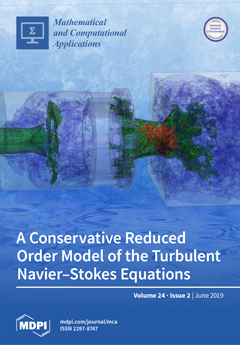The specificity and universality of intracellular Ca
signals rely on the variety of spatio-temporal patterns that the Ca
concentration can display. Ca
release into the cytosol through inositol 1,4,5-trisphosphate receptors (IP
Rs) is key for this
[...] Read more.
The specificity and universality of intracellular Ca
signals rely on the variety of spatio-temporal patterns that the Ca
concentration can display. Ca
release into the cytosol through inositol 1,4,5-trisphosphate receptors (IP
Rs) is key for this variety. The opening probability of IP
Rs depends on the cytosolic Ca
concentration. All of the dynamics are then well described by an excitable system in which the signal propagation depends on the ability of the Ca
released through one IP
R to induce the opening of other IP
Rs. In most cell types, IP
Rs are organized in clusters, i.e., the cytosol is a “patchy” excitable system in which the signals can remain localized (i.e., involving the release through one or more IP
Rs in a cluster), or become global depending on the efficiency of the Ca
-mediated coupling between clusters. The spatial range over which the signals propagate determines the responses that the cell eventually produces. This points to the importance of understanding the mechanisms that make the propagation possible. Our previous qualitative comparison between experiments and numerical simulations seemed to indicate that Ca
release not only occurs within the close vicinity of the clearly identifiable release sites (IP
R clusters) but that there are also functional IP
Rs in between them. In this paper, we present a quantitative comparison between experiments and models that corroborate this preliminary conclusion. This result has implications on how the Ca
-mediated coupling between clusters works and how it can eventually be disrupted by the different Ca
trapping mechanisms.
Full article





